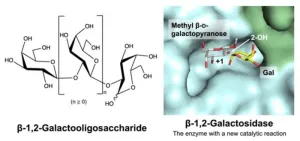(Press-News.org) A team of scientists from University College Cork (UCC) , the University of Connecticut, and the Natural History Museum of Vienna have uncovered how plants responded to catastrophic climate changes 250 million years ago. Their findings, published in GSA Bulletin, reveal the long, drawn-out process of ecosystem recovery following one of the most extreme periods of warming in Earth’s history: the ‘End-Permian Event’.
With more than 80% of ocean species wiped out, the end-Permian event was the worst mass extinction of all time. But the impacts of this event for life on land have been elusive. By examining fossil plants and rocks from eastern Australia’s Sydney Basin, researchers have pieced together a multi-million-year story of resilience, recovery, and the long-term effects of climate change.
The long, unsteady path to ecosystem recovery
The fossils from these Australian rocks show that conifers, like modern pines, were some of the earliest to colonize the land immediately after the End-Permian catastrophe. But the recovery back to flourishing forests was not smooth sailing.
The researchers discovered that even higher temperatures during the ‘Late Smithian Thermal Maximum’ caused the collapse of these conifer survivors. In turn, they were replaced by tough, shrubby plants resembling modern clubmosses. This scorching period lasted for about 700,000 years and made life challenging for trees and other large plants.
It wasn’t until a significant cooling event—the ‘Smithian-Spathian Event’—that large, but unusual plants called ‘seed ferns’ began to flourish and establish more stable forests. These plants eventually came to dominate Earth’s landscapes for millions of years, paving the way for the lush forests during the Mesozoic ‘age of dinosaurs’.
So, after millions of years, the forest ecosystems of the Mesozoic came to look like those from before the end-Permian collapse. But crucially, the plant species that made up the new forests were completely different. “The term ‘recovery’ can be misleading” says Dr Chris Mays, Leader of the Mass Extinction Group at University College Cork, “forests recover eventually, but extinction is forever.”
What does this mean for us?
By understanding how ancient plant ecosystems weathered extreme climate swings, researchers hope to learn valuable lessons about how modern plants and ecosystems might cope with today’s climate crisis. Ecosystems depend on a fragile balance, with plants as the backbone of land food webs and climate regulation.
“This research highlights how crucial plants are, not just as the base of land food chains, but also as natural carbon sinks that stabilize Earth’s climate,” explains UCC researcher, Marcos Amores, the study’s lead author. “The disruption of these systems can have impacts lasting hundreds of thousands of years, so protecting today’s ecosystems is more important than ever.”
This deep dive into Earth’s distant past reminds us that plants are unsung heroes of life on Earth—then, now, and in the future.
END
Plants struggled for millions of years after the world’s worst climate catastrophe
Can plants reveal the secrets of survival during Earth’s darkest days?
2025-03-06
ELSE PRESS RELEASES FROM THIS DATE:
Clinical trial opens to study groundbreaking 3D printed device for babies with rare respiratory disease
2025-03-06
ANN ARBOR, Mich. – A new clinical trial will allow researchers to study 3D-printed bioresorbable devices aimed at treating children with rare and life-threatening airway condition tracheobronchomalacia.
The trial, launched by Michigan Medicine and Materialise, marks a crucial step towards full Food and Drug Administration (FDA) approval for the innovative devices designed to support the airways of infants with the severest forms of the disease.
Tracheobronchomalacia causes the airway to collapse, making breathing difficult and, in severe cases, can be fatal. Currently, infants with this ...
Effects of shenfu decoction on neutrophil chemotactic function in septic mice
2025-03-06
Background and objectives
Sepsis involves a complex cascade of inflammatory reactions and immune system dysregulation. Neutrophils play a crucial role in modulating the anti-inflammatory response, which is vital for managing sepsis. Impaired chemotaxis of granulocytes can significantly impact the outcome of sepsis. Shenfu Decoction, by tonifying Qi and warming Yang, enhances the propelling function of Qi for promoting the chemotactic function of neutrophils. This study aimed to investigate the effects of Shenfu Decoction on the chemotactic function of neutrophils in septic mice and the underlying ...
ESMT Berlin offers scholarships in executive leadership
2025-03-06
Various full and partial scholarships will be available for three premier programs of ESMT: Bringing Technology to Market, the General Management Seminar, and the Executive Transition Program.
By offering financial support and access to distinguished executive education, ESMT is committed to fostering greater diversity in senior leadership. The initiative empowers professionals from various backgrounds to make a lasting impact in their industries and beyond.
The scholarships are aimed at senior leaders preparing for top executive positions, particularly transitioning from leading corporate divisions into board level as well as accomplished managers holding global responsibilities ...
New WSU study shows how scarcity pricing helps 'cult wineries' drive demand
2025-03-06
PULLMAN, Wash. — When a product is hard to buy, more people want it. A new Washington State University study reveals that wineries producing “cult wines” can boost long-term profits by keeping their prices low, creating excess demand that fuels their brand’s prestige and future revenue.
Economists in WSU’s School of Economic Sciences (SES) analyzed data on cult wines: rare, luxury bottles only available to consumers who secure a spot on a winery’s allocation list or purchase the product via the secondary market. The study, published in the Journal of Economic Behavior & Organization, focused solely on Washington, ...
New discovery and grant to accelerate Strep A vaccine efforts
2025-03-06
Researchers have discovered how antibodies help to protect against contagious bacterial infections caused by Strep A, including strep throat. And the findings are already contributing to efforts to accelerate the development of a Strep A vaccine.
The research, led by Murdoch Children’s Research Institute (MCRI), Monash University and the University of Auckland, using the world’s only human challenge model for Strep A, has uncovered how antibodies respond to strep throat infections.
MCRI Dr ...
Novel enzyme found in gut bacteria could revolutionize prebiotic research
2025-03-06
Carbohydrate chains, or glycans, are complex sugar-like compounds that play important roles in various biological processes and structures in our bodies. Galactosides are a type of glycan found in plants, animals, and microorganisms. For example, galactosides are present in plant cell walls and in certain types of beneficial sugars known as prebiotic oligosaccharides, which support gut health. Many glycans containing galactose are also added to processed foods like juice and powdered milk due to their potential health ...
Study reveals exposure to wildlife and forest walks helps ease symptoms of PTSD in US war veterans
2025-03-06
A new study published in the journal Human-Animal Interactions has revealed that exposure to wildlife and forest walks can help ease the symptoms of Post Traumatic Stress Disorder (PTSD) in US war veterans.
Researchers from UMass Chan Medical School studied 19 veterans with PTSD or PTSD symptoms and found that walking in the forest, assisting with wildlife care in a rehabilitation centre, seeing wildlife in a sanctuary, and bird watching improved psychological symptoms, especially reducing anxiety.
Those that took part in the near four-month study in Massachusetts ...
Urban highways cut opportunities for social relationships, says study
2025-03-06
[Vienna, 06.02.2025]—"In this study, we use the spatial social connections of people within the 50 largest cities in the US to test whether the built environment—in this case, urban highways— is indeed a barrier to social ties, as has long been assumed in urban studies. For the first time, we are also finding quantitatively that this is the case,” explains co-author Sándor Juhász. During his postdoctoral fellowship at the Complexity Science Hub (CSH), Juhász participated in the study.
This ...
Alzheimer’s treatment may lie in the brain’s own cleanup crew
2025-03-06
MEDIA CONTACT: Kristin Samuelson at 847-769-6596 or ksamuelson@northwestern.edu
EMBARGOED FOR RELEASE: 5 a.m. (ET), Thursday, March 6, 2025
Alzheimer’s treatment may lie in the brain’s own cleanup crew
Brain’s immune cells cleared plaques, restored a healthier brain environment in immunized patient brains
Current FDA-approved Alzheimer’s drugs remain controversial, with modest benefits, high cost
First time cutting-edge technique spatial transcriptomics was used on human clinical-trial brains with Alzheimer’s disease
Findings could reshape the future of Alzheimer’s ...
Climate change threatens future of banana export industry
2025-03-06
Climate change is rapidly reducing the ability of banana producers to supply one of our favourite fruits.
New research from the University of Exeter, published in Nature Food, has found it will be economically unsustainable by 2080 for many areas across Latin America and the Caribbean to continue growing bananas for export, because of rising temperatures caused by climate change.
Bananas are a key export crop worth $11 billion (£8.9 billion) annually and are crucial for the economies of many countries. Yet in just over half a century, 60 per cent of the regions currently producing bananas will ...
LAST 30 PRESS RELEASES:
Eye for trouble: Automated counting for chromosome issues under the microscope
The vast majority of US rivers lack any protections from human activities, new research finds
Ultrasound-responsive in situ antigen "nanocatchers" open a new paradigm for personalized tumor immunotherapy
Environmental “superbugs” in our rivers and soils: new one health review warns of growing antimicrobial resistance crisis
Triple threat in greenhouse farming: how heavy metals, microplastics, and antibiotic resistance genes unite to challenge sustainable food production
Earthworms turn manure into a powerful tool against antibiotic resistance
AI turns water into an early warning network for hidden biological pollutants
Hidden hotspots on “green” plastics: biodegradable and conventional plastics shape very different antibiotic resistance risks in river microbiomes
Engineered biochar enzyme system clears toxic phenolic acids and restores pepper seed germination in continuous cropping soils
Retail therapy fail? Online shopping linked to stress, says study
How well-meaning allies can increase stress for marginalized people
Commercially viable biomanufacturing: designer yeast turns sugar into lucrative chemical 3-HP
Control valve discovered in gut’s plumbing system
George Mason University leads phase 2 clinical trial for pill to help maintain weight loss after GLP-1s
Hop to it: research from Shedd Aquarium tracks conch movement to set new conservation guidance
Weight loss drugs and bariatric surgery improve the body’s fat ‘balance:’ study
The Age of Fishes began with mass death
TB harnesses part of immune defense system to cause infection
Important new source of oxidation in the atmosphere found
A tug-of-war explains a decades-old question about how bacteria swim
Strengthened immune defense against cancer
Engineering the development of the pancreas
The Journal of Nuclear Medicine ahead-of-print tip sheet: Jan. 9, 2026
Mount Sinai researchers help create largest immune cell atlas of bone marrow in multiple myeloma patients
Why it is so hard to get started on an unpleasant task: Scientists identify a “motivation brake”
Body composition changes after bariatric surgery or treatment with GLP-1 receptor agonists
Targeted regulation of abortion providers laws and pregnancies conceived through fertility treatment
Press registration is now open for the 2026 ACMG Annual Clinical Genetics Meeting
Understanding sex-based differences and the role of bone morphogenetic protein signaling in Alzheimer’s disease
Breakthrough in thin-film electrolytes pushes solid oxide fuel cells forward
[Press-News.org] Plants struggled for millions of years after the world’s worst climate catastropheCan plants reveal the secrets of survival during Earth’s darkest days?






